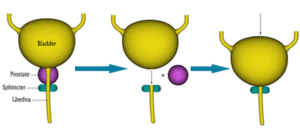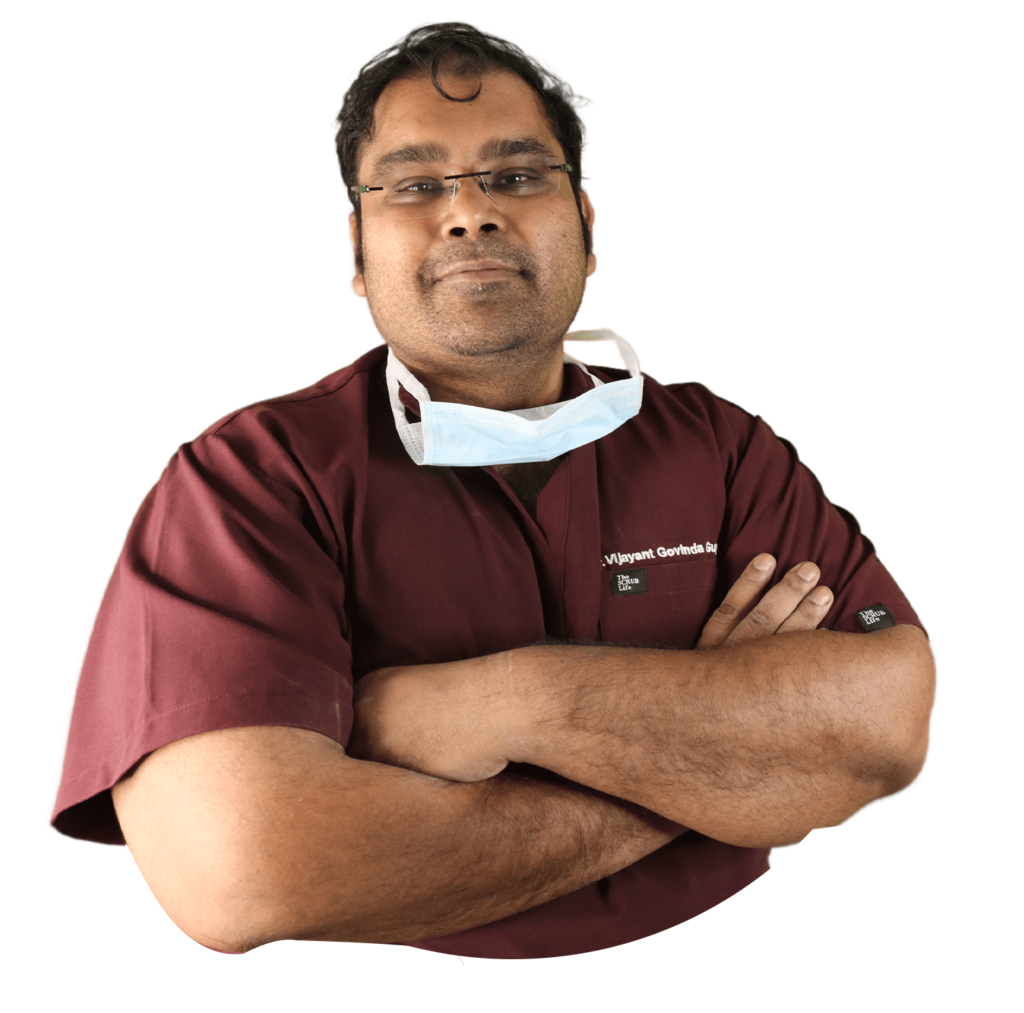Surgical Removal of Prostate Cancer
Dr Vijayant Govinda Gupta is a Urologist with specialization in Urooncology and Robotic Surgery. In this article we discuss the Surgical Treatment of Prostate Cancer in New Delhi India. We will touch on prostate cancer briefly, then move on to surgical prostate cancer treatment options and then focus on radical prostatectomy. Dr Vijayant Govinda Gupta has more than 14 years of Experience. With vast exposure to Robotic and Laparoscopic Surgery, he follows best global practices in Prostate Cancer Surgery He is a full member of the European Association of Urology and Urological Society of India. He is an ex member of the American Urological Association. Trained and India and abroad, he provides consultation and prostate cancer surgeries in New Delhi India.

With a well synchronized team we can provide the best treatment for Prostate Cancer
Best Team for Prostate Cancer Treatment In New Delhi, India
- Dr Vijayant G Gupta – Head Surgeon and team lead.
- Dr Vineet G Gupta – Medical Oncologist
- Mrs Tenzing Dolkar – Chief patient coordinator
- Mr Shwetank Bansal – Physio and Kegels Trainer
- Dr Bhaveis Pateil – Radiologist
- Dr S Abraull and Dr S Sagoo – Surgical Assistants
- Anesthetist – Team of five dedicated anesthetists for patient optimization and post operative recovery
- Trained Nursing Staff – Ability to manage and provide care in a high volume prostate cancer
- Pathologist – For accurate staging and grading
Frequently Asked Questions on Prostate Cancer Surgery (Radical Prostatectomy) In New Delhi India
- When is surgical treatment of prostate cancer possible?
- Am I a candidate for radical prostatectomy?
- What is Radical Prostatectomy?
- Laparoscopic vs Robotic Assisted Radical Prostatectomy
- Cost of Radical Prostatectomy in New Delhi India
When Is Surgical Treatment of Prostate Cancer Possible?
The surgical cure of prostate cancer is only possible if the disease is localized. Localized means that the cancer is present only in the prostate gland and has not travelled beyond. Localised disease according to TNM classification is T2N0M0 or less. This in simple terms means that
- Cancer is only present inside the prostate gland
- There is no lymph node involvement
- There is no metastasis to bones or any other organ
If such is the case then complete surgical removal of the prostate gland along with all lymphatics (lymph node dissection) is sufficient. This surgery is called Radical Prostatectomy. In certain cases if the cancer has gone slightly beyond the prostate, even then surgery may cure the patient. These indications are still controversial. For example T3a disease may also be surgically managed, if the Gleason score is low and PSA levels are also low.
Are You A Candidate for Radical Prostatectomy?
If you have localized prostate cancer then you are a candidate for curative surgery. There are certain contraindications for surgery. If these are present then you should opt for other treatment forms. These are
- Age above 75 years
- Uncontrolled diabetes
- Uncontrolled Hypertension
- Past history of heart ailment
- Unable to walk / move/ Bedridden
- Stroke
If you are fit and even above 75 years you may still be considered for surgery
What Is Radical Prostatectomy?
In radical prostatectomy, we remove the prostate gland along with all cancerous tissues including lymph nodes. The prostate is situated between the bladder mouth and urine pipe or urethra. This gland has to be removed en toto. The surgery usually lasts for a few hours, bleeding is usually minimal and you will be ready to go home in a 48 hours. You shall have some pain after surgery. You shall have a catheter in your penis to drain urine for about 7 to 9 days after which it shall be removed to allow you to void normally. You shall have 5 small 8 mm scars that would heal within 7 days leaving very discrete marks.
Post surgery you may face the following side effects like
- Incontinence or urinary leak (less than 5 percent)
- Retention or not able to void (less than 1 percent)
- Erectile dysfunction (20 to 30 percent)

The most feared complication of radical prostatectomy is incontinence or leakage of urine. But fortunately, it will occur in 5% patients. And it improves with time, and most patients will do well after 6 months. Leakage if any would usually be minimal, requiring placing a single pad for a day. If you are young and enjoy a healthy sexual life, then I assure you that most patients who have normal erections before surgery, are able to retain erections and have intercourse after surgery too
Laparoscopic Radical Prostatectomy Vs Robotic Assisted Radical Prostatectomy
Radical prostatectomy sounds scary, and I understand it produces lot of anxiety in the patients mind. But with today’s technical advancements, you are in safe hands. Radical prostatectomy can be done any of 3 ways. Open, laparoscopic and via a robot. When a robot is used for the surgery, then the procedure is called Robot assisted lap radical prostatectomy or RALP or Robotic Radical prostatectomy (RARP). When done only by laparoscopy its called Laprascopic Radical Prostatectomy or LARP.
In both laparoscopic and robotic surgery, the port placement and surgical time taken is the same. The only real advantage of the robotic assistance in suturing or stitching the ends together in the end. But the cost difference is significant.
I perform both laparoscopic and robotic surgeries for prostate cancer. Depending on patient demand and affordability.


